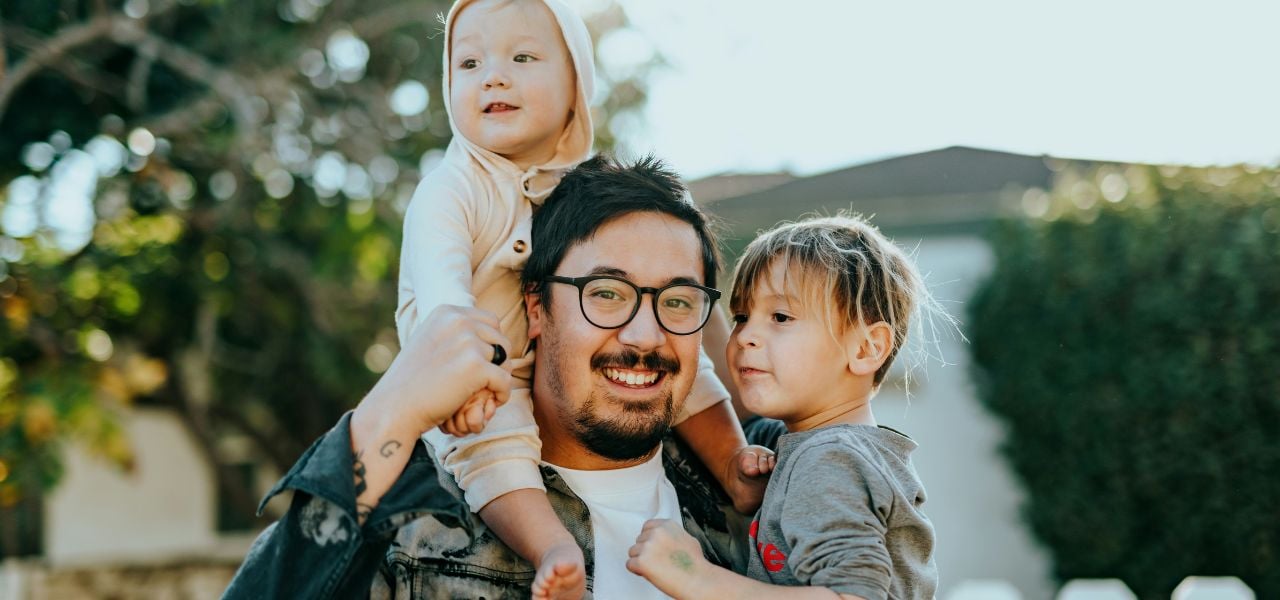Language is a powerful instrument with the ability to bring us together – and tear us apart. Our choice of words and how we express ourselves can create friendships and provide comfort, but they can also cause pain, create stigma, and reinforce prejudices in our communities.
Inclusive language puts humanity at the centre, allowing individuals to feel heard, valued, and respected in society. We have created some helpful guidelines that aim to foreground the voices, experiences, and viewpoints of marginalized or stereotyped people and further ingrain the principles of equity, diversity, and inclusivity at EHN Canada.
Talking Mental Health
“How depressing.” “She’s psycho.” Or “That’s crazy.” There is a good chance you’ve heard it or have even maybe said these phrases yourself. They’re pretty normalized in everyday conversation, but it’s important to understand how they contribute to the stigma surrounding mental health, while also trivializing the experiences of those living with a mental illness.
According to CAMH, in any given year, 1 in 5 Canadians experience a mental illness, and by the time Canadians reach 40 years of age, 1 in 2 have or have had a mental illness.
This means that the people you encounter in your daily life may be dealing with mental illness, and the words you choose when communicating can either contribute to feelings of alienation or empower them on their recovery journey.
Here are some suggestions of language to avoid and language that is encouraged when discussing mental health and mental illnesses:
| INSTEAD OF: | TRY: |
|---|---|
| Addict | Person with a substance use disorder |
| Substance abuse Alcohol/drug abuser | Substance use disorder Someone with a substance abuse disorder |
| Alcoholic | Person with alcoholism |
| Recovery addict | In recovery |
| Mentally ill | Person with a mental condition Person with a mental disorder Person with a mental illness Person diagnosed with… |
| A failed attempt at suicide | Attempted to take their own life |
| They are schizophrenic | They are a person with schizophrenia |
| They are depressed | They have depression |
| Clean | Sober, substance-free, drug-free, abstinent |
| They suffer from an eating disorder They are a victim of their eating disorder | They are living with an eating disorder |
| Insane, neurotic, lunatic | Person with a psychiatric disability or person with a mental illness |
Be specific
There are many types of mental illnesses. It’s crucial to avoid general statements that fail to recognize the unique symptoms and treatments that come with different mental illnesses. For instance, instead of saying, “They have a mental illness,” try, “They have bipolar disorder.”
Use person-first language
It can be dehumanizing and disempowering when someone with a mental illness is reduced to their condition. Fundamentally, a person’s mental health condition is just one aspect of their identity, not a defining quality. For example, instead of saying, “That person is mentally ill,” try “They are living with a mental illness.”
Talking Race & Ethnicity
Historically, systemic injustice has created a space for bias and prejudice to permeate everyday language – often in ways that have become so entrenched as to be rendered invisible. However, language that excludes certain groups is intolerant, racist, and encourages stereotypes and bigotry.
While we might not always be conscious of the damage our words can do, especially if we are a part of a group holding power, inclusive language can help create a more welcoming environment for all. As Flanagin A., et al. write, “Inclusive language supports diversity and conveys respect.” The following suggestions on racial and ethnic terminology are intended to help you choose descriptors that affirm related individuals and groups, while also deconstructing exclusive cultural norms and patterns that reinforce unjust power relations in society.
| INSTEAD OF: | TRY: |
|---|---|
| Minority – This term is over-generalized | Racial and ethnic minority/minoritized groups Marginalized groups Historically or systematically excluded groups |
| Using racial and ethnic groups as nouns (e.g., “Asians,” “Blacks,” “Hispanics,” or “Whites”) | Using the adjectival form (e.g., Asian individuals, Black community, Hispanic children, or White patients) |
| BIPOC – This acronym does not consider the different ways that racialized people experience race and racism Non-white – This emphasizes the idea of white as a default Other – This term is often used to describe nonspecific ‘subgroups’ that are too small for meaningful analyses. | Being specific about the racialized or ethnic group you are referring to |
Avoid making assumptions
There are numerous customs, traditions, and subcultures among racial and ethnic groups. It’s important to be mindful of the diversity within racial and ethnic identities. Instead of making assumptions, ask them how they identify themselves. For example, not all Indians practice Hinduism.
Talking Sex, Gender, and Sexual Orientation
The terms “sex,” “gender,” and “sexuality” are frequently used interchangeably. However, each of these terms is considerably different from one another, making it incorrect to use them interchangeably.
Sex is a label assigned to us at birth, generally male or female, and is based on your genitals and chromosomes. Some individuals may be intersex, meaning they do not have the biological structure of the male or female body.
On the other hand, gender is a set of socially constructed characteristics of femininity and masculinity. Gender identity refers to how you feel on the inside and how you perform your gender based on what you wear, how you behave, and how you look – all of which, depending on the person, may not align with social expectations about gender.
Lastly, a person’s sexual orientation or sexuality is their innate emotional, romantic, or sexual attraction to specific genders (i.e. gay, lesbian, pansexual, heterosexual, etc.)
Use gender-neutral language
Language has the potential to establish a safe and inclusive culture where everyone – no matter their gender identity – feels seen. It’s best to avoid assuming other people’s gender identity and instead ask them how they identify themselves.
For instance, instead of saying ” Hello sir,” try “Hello” or “Hello, my name is Xay. My pronouns are she/her. How should I address you?”
The following are some examples of gender-neutral language:
| INSTEAD OF: | TRY: |
|---|---|
| Mankind | Humankind/Humanity |
| Man-made | Machine-made or artificial |
| Hi guys | Hi everyone, hi friends, or hi folks |
| Ladies and gentlemen | Friends and folks |
| Fireman | Firefighter |
| Policeman | Police officer |
| Husband/wife, girlfriend/boyfriend | Spouse/Partner |
For general reference
Although LGBTQ is often used to reference Lesbian, Gay, Bisexual, Transgender, and queer communities, a more inclusive term to use is LGBTQIA2S+, which stands for Lesbian, Gay, Bisexual, Transgender, Queer, Intersex, Asexual, and Two-Spirited.
Over the years, some language references to people in the LGBTQIA2S+ community have become outdated and offensive. Here are some terms to avoid:
| INSTEAD OF: | TRY: |
|---|---|
| Birth sex | Assigned sex or sex assigned at birth |
| Tranny, transsexual, transgendered, or transvestite | Transgender people |
| Gender identity disorder | Gender dysphoria |
| Hermaphrodite | Intersex |
| Sex-change operation | Gender-affirming surgery |
| Homosexual | Gay, lesbian |
| They are in a homosexual relationship | They are in a relationship |
| LGBTQIA2S+ lifestyle | LGBTQIA2S+ people and their lives |
Talking Age
“We need to avoid ‘othering’ language that positions people in different age groups as ‘them’ and not ‘us’,” says Niall Ryan, of the Centre for Ageing Better.
Regardless of our age, we have something to contribute and our opinions matter. However, certain language can play a part in encouraging ageism. Ageism can affect people at any point of their lives and take on a multitude of forms, such as discriminatory attitudes, practices, and institutional policies that enable harmful beliefs about various age groups.
Age-inclusive language aims to eliminate bias in discussing different ages and reframe ageist attitudes for an increasingly positive, uplifting, and inclusive environment.
The following are some examples of age-inclusive language:
| INSTEAD OF: | TRY: |
|---|---|
| The elderly, elderly people, aging dependents, seniors, oldie, geriatric | Older adults, older people, or persons over 65 years of age |
| Childish | Absurd |
| Emerging adult | Student, young person, or youth |
| Labels such as Baby Boomers, Generation X, Millennials, Generation Z, etc… | Using birth years to refer to a generation (i.e. people born between 1965 and 1980) |
Talking Ability Status
According to The Center for Disability Rights, ableism is any belief or practice that devalues and discriminates against people with physical, intellectual, or psychiatric disabilities. Disability-inclusive language is a vital tool in fighting against ableism by helping eliminate barriers that disadvantage people with disabilities. It is about being human-centred and putting people first.
People with disabilities should not be viewed as atypical. As the United Nations states, “Persons with disabilities are the same as everyone else in terms of talents and abilities.” Disabilities are a part of human diversity. Therefore, it’s best to avoid statements that sensationalize the lives of people with disabilities. For example, calling someone with a disability “brave” or “superhuman” can come across as condensing.
Here are some suggestions of language to avoid and language that is encouraged when discussing ability, mental, and physical attributes:
| INSTEAD OF: | TRY: |
|---|---|
| Special needs, cripple, handicapped, disabled, spastic, physically or mentally challenged | Person who has a disability or person with a disability |
| On the spectrum | Neurodivergent |
| Brain damaged | Person with a traumatic brain injury |
| Wheelchair-bound or confined to a wheelchair | Wheelchair user, person in a wheelchair or person who uses a wheelchair |
| Visually challenged | Visually impaired or person who is visually impaired |
| Person with hearing loss, hearing impaired | Person who is hard of hearing |
| Person who is deaf, the deaf | Deaf person, deaf people |
| The blind | People who are blind |
| Mentally retarded | Person with an intellectual disability |
| Disabled parking/toilets | Disability accessible parking/toilet |
Avoiding Microaggression
Oftentimes, people don’t realize that they’re using exclusive language towards marginalized groups. Every day, subtle, intentional, and sometimes unintentional instances of exclusive language are referred to as microaggression and can be just as damaging as overt instances of bias, prejudice, and racism.
The following are some examples of microaggressions:
| WHAT YOU SAY | WHAT OTHERS HEAR |
|---|---|
| Where are you from? or Where were you born? | You are a foreigner in your own country Your ethnic/racial identity makes you exotic |
| I don’t see colour | I am denying your racial/ethnic experiences |
| You people… | You don’t belong |
| Who is the man in the relationship? | Your relationship must fall along heteronormative lines |
| What she’s trying to say is… | I do not value her or listen to her |
Culturally Appropriative Language
Cultural appropriation is often discussed as something physical, like clothing or a hairstyle. While sometimes not as blatantly obvious, appropriative language can cause harm to other cultures by stripping certain words of their cultural significance.
| INSTEAD OF: | TRY: | WHY: |
|---|---|---|
| Saying “tribe” when referring to a group of people (i.e. friends or family) | Friends, group, pals, team | The word “tribe” was traditionally a pejorative term used by European settlers to refer to Indigenous people. |
| Spirit animal | Animal I would most like to be or favourite animal | In some cultures and spiritual traditions, a “spirit animal” is seen as a protector through life. Comparing this with an animal you enjoy devalues its significance. |
| Powwow | Party, gathering, meeting | A powwow is a celebration that honours Indigenous culture and community. |
| Ninja | Expert, whiz | In Japanese culture, ninjas were soldiers who came from lower-class households. |
| Nitty gritty | Fundamentals, essential, core | The phrase “get down to the nitty gritty” came from English slave trade and was used in reference to the worthless debris left on the ship after slaves were evacuated, but it later came to apply to the slaves themselves. |
Our Words Matter
When interacting with others, it is important to remember the basics: treat people how you want to be treated. Do your best to be kind and mindful, and communicate without prejudice. By adopting vocabulary that empowers everyone, irrespective of race, gender, sex, age, health, or ability status, we can open new avenues for building meaningful connections and fostering inclusive spaces.
Inclusive language is ever-changing
Language is fluid, constantly evolving in response to social and cultural changes, and inclusive language is built on continuous education, open conversation, and connecting with others.
At EHN Canada, we will work to update this guide with the most recent and suitable terminology. However, the language included in this guide should not be viewed as definite.
If you have any comments, questions, or concerns, please reach out to Jeremy Houston at [email protected].
References
- 18F Content Guide., “Inclusive Guide.” Available at: https://content-guide.18f.gov/our-style/inclusive-language/#race-ethnicity-and-religion
- American Psychiatric Association., “Words Matter: Reporting on Mental Health Conditions.” Available at:(https://www.psychiatry.org/newsroom/reporting-on-mental-health-conditions
- CAMH., “Mental Illness and Addiction: Facts and Statistics.” Available at: https://www.camh.ca/en/driving-change/the-crisis-is-real/mental-health-statistics
- Center for Disability Rights., “#Ableism.” Available at: https://cdrnys.org/blog/uncategorized/ableism/
- Flanagin A, Frey T, Christiansen SL, Bauchner H. The Reporting of Race and Ethnicity in Medical and Science Journals: Comments Invited. JAMA. 2021;325(11):1049–1052. doi:10.1001/jama.2021.2104
- Ryan, N., “What does ageism look like?”Available at: https://ageing-better.org.uk/blogs/what-does-ageism-look
- United Nations., “Disability-Inclusive Language Guidelines” Available at: https://www.ungeneva.org/sites/default/files/2021-01/Disability-Inclusive-Language-Guidelines.pdf



